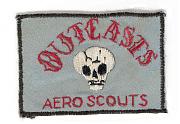I agree. There are far too many historical examples of this happening to ignore. Big Army (even when it was a small army) has always wanted to focus on the ideal "large force on large force" combat model at the expense of anything else. Even when its main business was acting as a constabulary the training models were firmly focused on fighting a European-style enemy (or re-fighting the parts of the Civil War that appealed...mostly the large Eastern Theater battles against Lee). It wasn't so much Army training that allowed success in the Philippines...it was the large number of Indian Wars veterans within the ranks (both officer and enlisted) who could draw on their own experiences and not their training. That's a model we might actually see in the future...the Army reverting to its "comfort zone" and seeing any success on future COIN battlefields due to the remaining experience of its officer and NCO corps and not its own foresight and training. Of course, given the exodus of that experience (and assuming we see something similar to the weeding that took place after Vietnam) that knowledge might be very thin in the ground within a handful of years.















Bookmarks